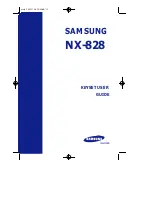
3
Remember that the final fixing should be done using the foam tape supplied with
your gyro.
(Spare foam is available as a CSM part)
Useful tips.
It helps to turn the gyro gain to full just while checking the sense, as this will maximise any
correction so making it easier to see.
To work out which way the tail rotor will go just remember the leading edge (front) of the tail
blades will point in the direction that the tail rotor will go, so for a left stick command you
want the tail blades to point to the right (tail swings to the right and the nose goes left)
Rotation rate.
This gyro has a degree of Pilot authority mixing built-in, so as the rudder stick is moved
away from the centre stick position the gyro automatically lowers the gain.
This means the gyro will not try to resist any deliberate rotation as strongly, so allowing a
faster rate of rotation than is achievable with other single rate gyro's.
If you find the model will not rotate as fast as desired, raise the ATV/ Travel Adjust on the
rudder channel until the desired rotation rate is achieved
, it is normal for the servo to over
travel the available tail pitch slider movement by a considerable margin if high rates
of rotation are needed,
in the air the gyro will reduce these movements so that it is unlikely
that the servo can be stalled while the model is in flight but avoid giving full stick rudder
commands while the model is on the ground as this could cause the servo to be stalled and
possibly damage the servo or tail linkage.
Because of this it is advisable to disconnect the servo from the linkage while setting the gyro
up on the workbench.
Setting the gyro gain.
The gyro gain is adjusted via the gain pot which is accessed through the side of the gyro
case, this is rotated clockwise to increase the gain or anti-clockwise to lower the gain.
A gain value of approximately 50% is a good starting point; this can then be adjusted as
necessary once the correct amount has been established by flight-testing.
IMPORTANT
NOTE
. Any change of gain will only effect the gyro once the receiver power
has been cycled (the gyro only "sees" the adjustment when the gyro is first powered up)
How much gain should you use?
Ideally you want to run the gain as high as possible, just below the point where an oscillation
(wag) will set in.
You can only find this point by flying the model and once a level of gain has been reached
where an oscillation sets in reduce the gain by just a small amount so that an oscillation will
not start.
Note.
It is normal to be able to run a higher gain in the hover than in forward flight and higher still if
a low rotor speed is used, so if the gyro has been set up for just hovering flight it will be
necessary to lower the gain a small amount to allow forward flight to be undertaken without
problems (or hovering flight on a windy day)
A useful tip to remember is if a wag is set up in forward flight then this can be stopped by
reducing the forward speed of the model.
ICG 180 Trouble shooting.
Q. No matter what I do I can't seem to adjust the gyro gain
!
A. Remember any gain adjustment will only be recognised by the gyro once the receiver
power has been cycled.
Q. Every thing seems fine until just before the model leaves the ground, then the model
spins rapidly & uncontrollably.






















